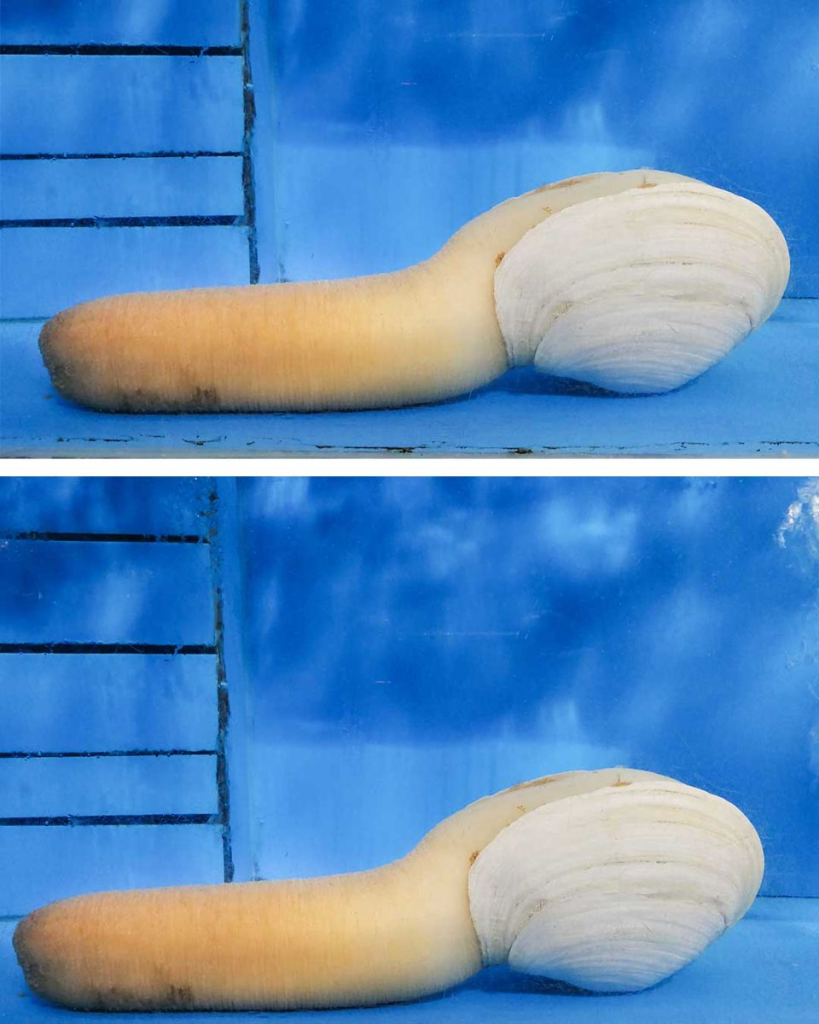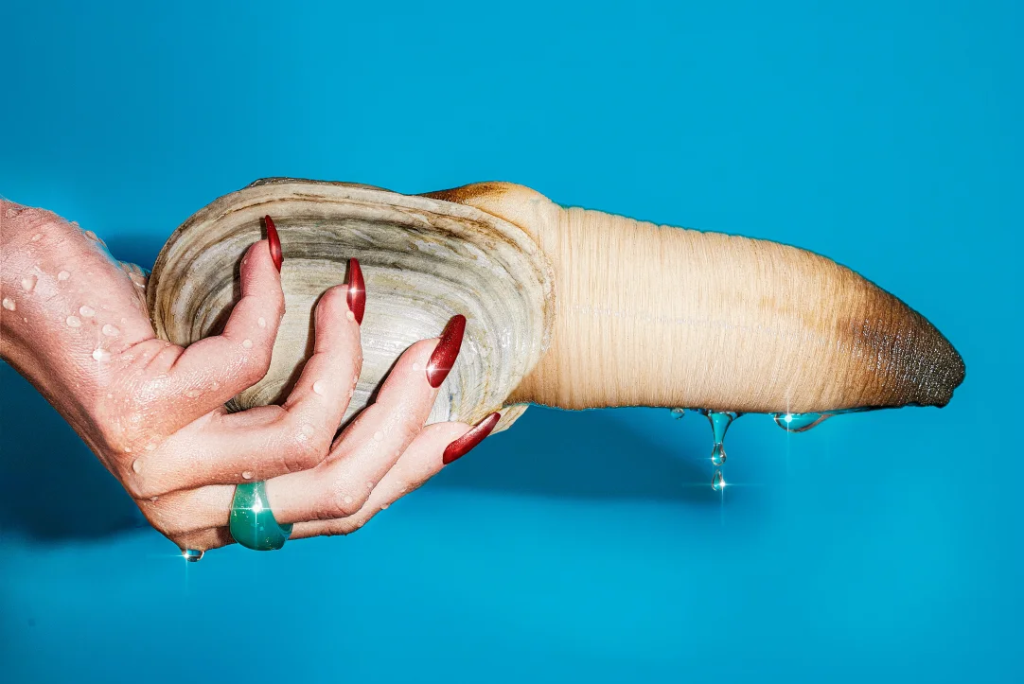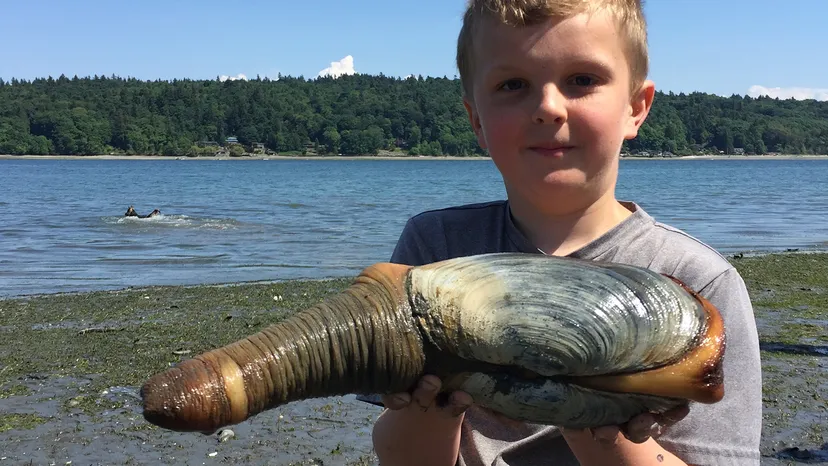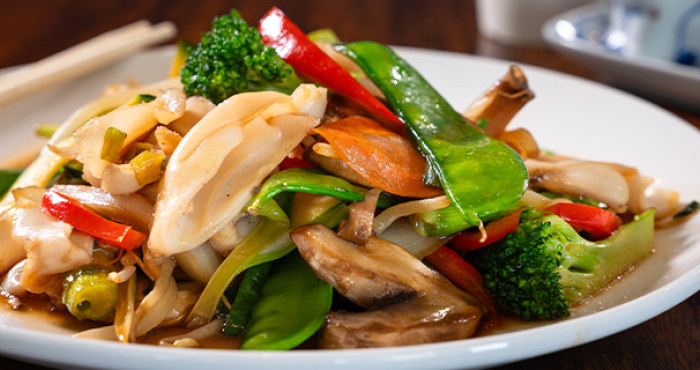We’ve all had those moments while dining out when something unusual catches our eye — but this one takes the cake. Picture this: You’re enjoying your meal at a cozy Chinese restaurant when you glance over at the seafood tank. Among the crabs and lobsters, there it is — a creature so weird-looking it seems like it crawled out of a sci-fi movie. Long, fleshy, and awkwardly elegant, with a neck that just won’t quit. The table next to you is whispering. Someone leans closer. What on earth is that thing?
The answer: It’s a geoduck. And yes — you can eat it.

The Geoduck Explained: Not Just a Funny Name
Let’s get one thing straight — it’s pronounced “gooey-duck.” Strange name? Absolutely. But it fits the personality of this ocean oddball perfectly. The geoduck is one of the largest burrowing clams in the world, and it calls the Pacific Northwest home. From Washington State to British Columbia, these giants live buried in sand, sticking their long necks — technically called siphons — up through the ocean floor to filter feed.
So, why is it in a Chinese restaurant halfway across the world? Because it’s considered a luxury item, especially in Asian cuisine. The geoduck might look like something you’d only see in a marine biology textbook, but in high-end seafood circles, it’s a delicacy.
Video: Believe Us, You’ve Never Seen a Clam Like This
Nature’s Weirdest Looking Delicacy
Let’s be real — the geoduck doesn’t win any beauty contests. Its shell is small, and its siphon is long, wrinkled, and slightly phallic (don’t pretend you weren’t thinking it). But this strange shape serves a purpose. That extended neck helps the geoduck breathe and feed while safely hidden deep under the sand — sometimes as far as three feet down. It’s evolution doing its thing, and the result is… well, let’s say “unique.”
It’s exactly this visual oddity that makes people stop and stare. It’s the kind of creature that raises eyebrows and questions. And honestly? That’s part of the fun.
The Geoduck’s Journey: From Indigenous Tables to Gourmet Menus
Long before it was Instagrammed or turned into viral content, the geoduck was a staple in the diets of Indigenous peoples in the Pacific Northwest. The name itself comes from the Lushootseed word meaning “dig deep” — which makes perfect sense, given how buried these guys like to be.
Fast forward to today, and geoduck has become a sought-after ingredient in upscale Chinese, Japanese, and Korean kitchens. It’s not just about the novelty — it’s about the flavor and texture. When fresh and handled right, this clam delivers a crisp bite and sweet, ocean-kissed taste that serious seafood lovers go crazy for.
How Geoduck Is Served: From Raw Sashimi to Hot Pot Heaven

One of the most popular ways to enjoy geoduck is as sashimi. Served raw and thinly sliced, its texture is firm, almost crunchy, with a slightly sweet and briny profile. Think of it as somewhere between clam and abalone — but with its own unique character.
If raw seafood isn’t your thing, don’t worry. Geoduck can also be:
- Blanched and chilled for seafood salads
- Stir-fried with garlic and veggies
- Cooked in hot pot, a Chinese favorite where it’s dunked into boiling broth for a few seconds
The key is to not overcook it — it’s delicate, and too much heat will turn it rubbery. Cooked right, it’s tender and flavorful.
Is It Actually Safe to Eat? Let’s Clear That Up
We get it — when something looks this odd, the first instinct is to ask if it’s safe. And the answer is a resounding yes, as long as it’s handled correctly.

Like any shellfish, geoduck should be:
- Sourced from clean waters (to avoid contamination or natural toxins)
- Stored at the right temperature until it’s ready to be cooked or served
- Prepared fresh to ensure safety and preserve flavor
Restaurants that serve geoduck — especially high-end Chinese establishments — know how to handle it properly. And if you’re buying it from a seafood market? Ask where it came from and how to store it until you’re ready to eat.
The Cultural Appeal of Eating the Unusual
There’s something rewarding about stepping outside your comfort zone. Geoduck may not look familiar, but it’s part of a long tradition of celebrating foods that are rare, regional, and packed with flavor. From sea cucumbers to jellyfish salad, Chinese cuisine doesn’t shy away from the unconventional — and that’s part of what makes it so fascinating.
Trying something like geoduck isn’t just about tasting a new dish — it’s about experiencing a slice of another culture. You’re expanding your palate, challenging your expectations, and maybe even discovering a new favorite.
Conclusion: When the Strange Turns Out to Be Delicious

So the next time you find yourself in a Chinese restaurant and spot something weird waving at you from the seafood tank, don’t be too quick to judge. That strange-looking creature might just be geoduck, one of the ocean’s most misunderstood — and most delicious — treasures.
It’s safe. It’s packed with flavor. And it might just be the most memorable bite you’ll have all year.
Sometimes, the weirdest things turn out to be the best surprises on your plate. All you have to do is take that first bite.


